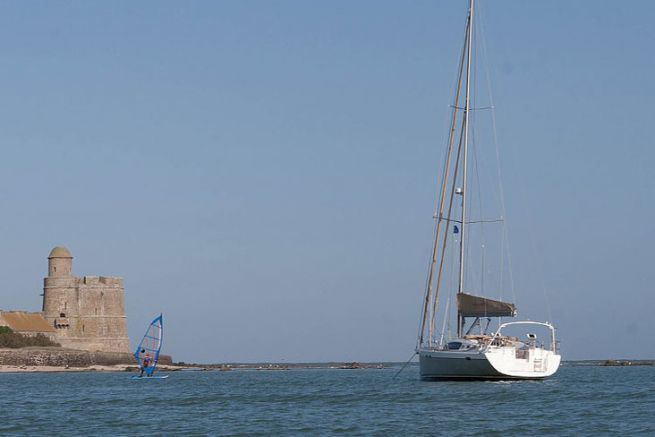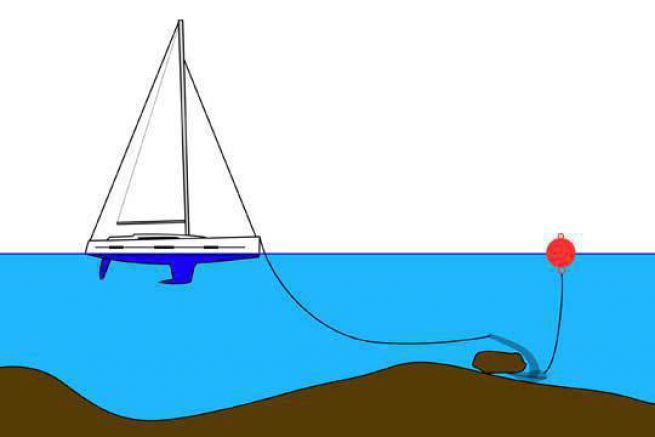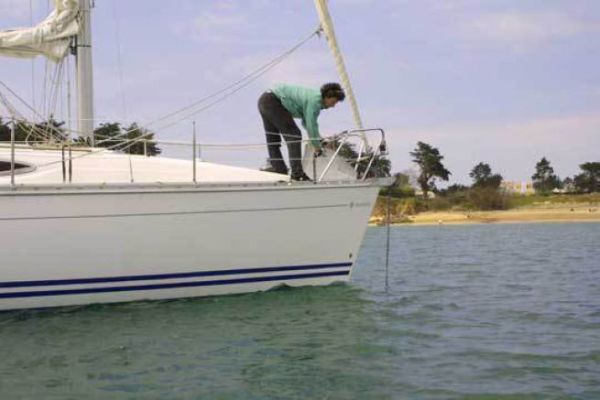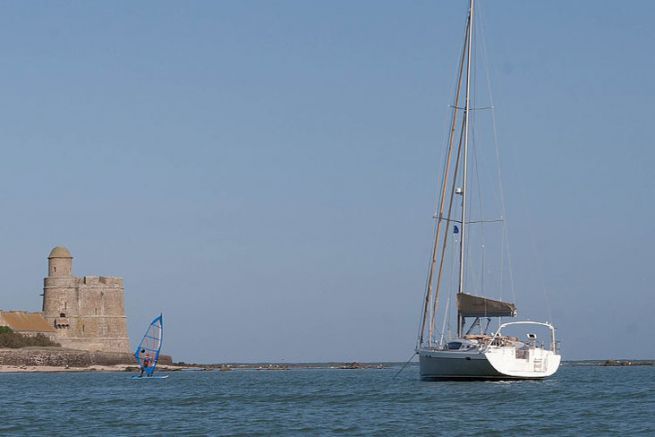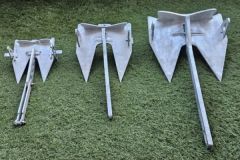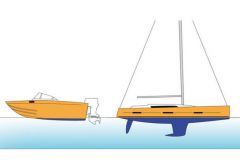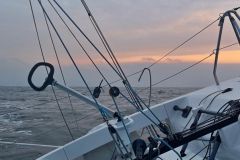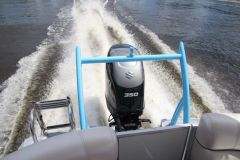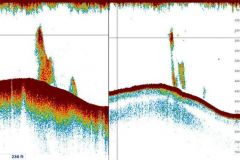Sharpen
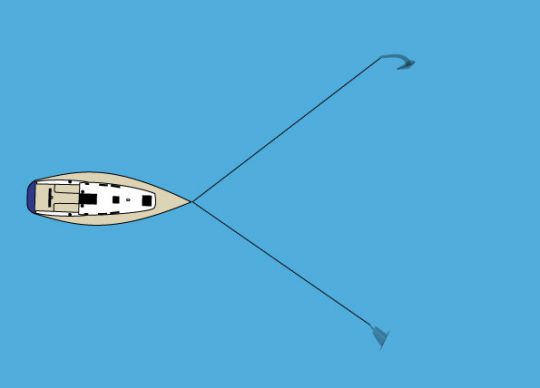
The 2 anchors must be set so that the anchor lines form a V in front of the boat. The anchors are set between 60 and 120° from each other.
This solution is used to limit the turning radius. However, it is not recommended for better performance in bad weather. In fact, the anchors work one after the other and not at the same time.
Emboss

Embossing consists in adding an anchor from the back (it can be a hawser carried on land). This keeps the boat in line with its axis. This can be useful in areas where it is impossible to avoid (a river for example).
But this is still a fair weather anchorage, because if the wind comes from the beam, the anchors do not work properly.
Empenneler

This is the ideal anchorage in bad weather. It consists of dropping a first anchor (the light anchor) and then hitting the end of the chain at the main anchor. This way, both anchors work in line and correctly.
To facilitate the retrieval of the anchor, it is recommended that the distance between the two anchors be greater than the depth. This allows the first anchor to be hauled up while the other is still on the bottom.
Wet in beard

This technique consists of dropping the anchors one after the other. The first anchor is dropped, then the second is let go after a few meters (between 10 and 20 m). This type of anchoring allows you to work on 2 anchors at the same time. However, it is less efficient than impregnating and, above all, there is a big risk of seeing the anchors get tangled up..
Dating back to the ancient navy (this maneuver is described in Jean Merrien's 1902 Dictionary of the Sea), this practice is not often used.
